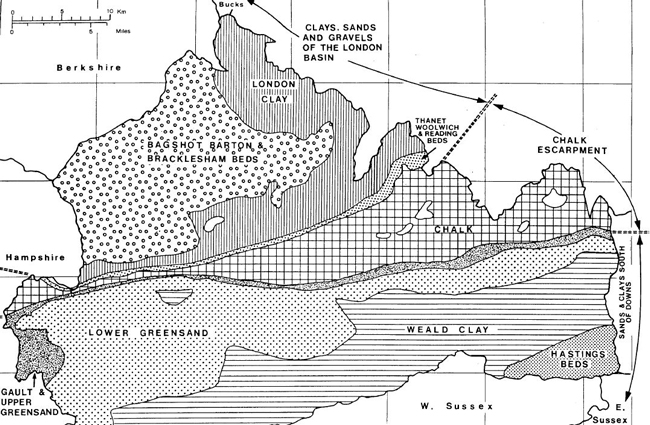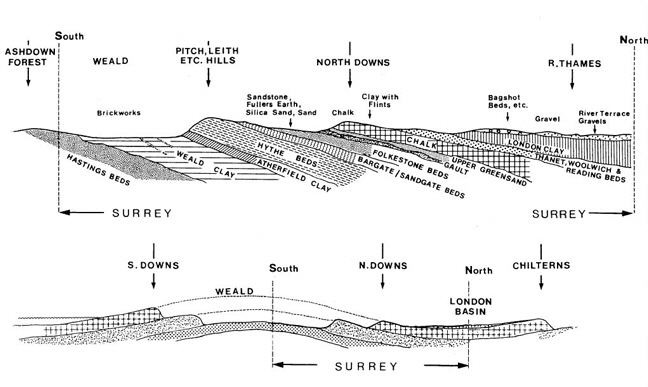Epsom Common lies on a very thick layer of London Clay, up to 200ft thick and almost impermeable to water, unlike the nearby chalklands of Epsom Downs. There are deep valleys which were carved by long extinct rivers that traversed the area millions of years ago, and these valleys let quantities of water run off much of the Common, but for them it would be almost totally waterlogged.
London Clay Formation
This is a uniform, stiff, blue-grey clay that weathers to brown upon exposure. The upper beds may contain sand and are known as the Claygate Beds. Where not covered by more recent deposits the London Clay forms a wide, gently undulating outcrop, dipping gently towards the Thames. Although the clay has not been favoured for brickmaking as it is too plastic and contains much pyrite, many brickworks were established, mixing the clay with straw, manure or refuse to lighten it and prevent excessive shrinkage. No London Clay brickworks remain active in Surrey, though the clay is sometimes used as constructional fill and in conjunction with gravel working.





